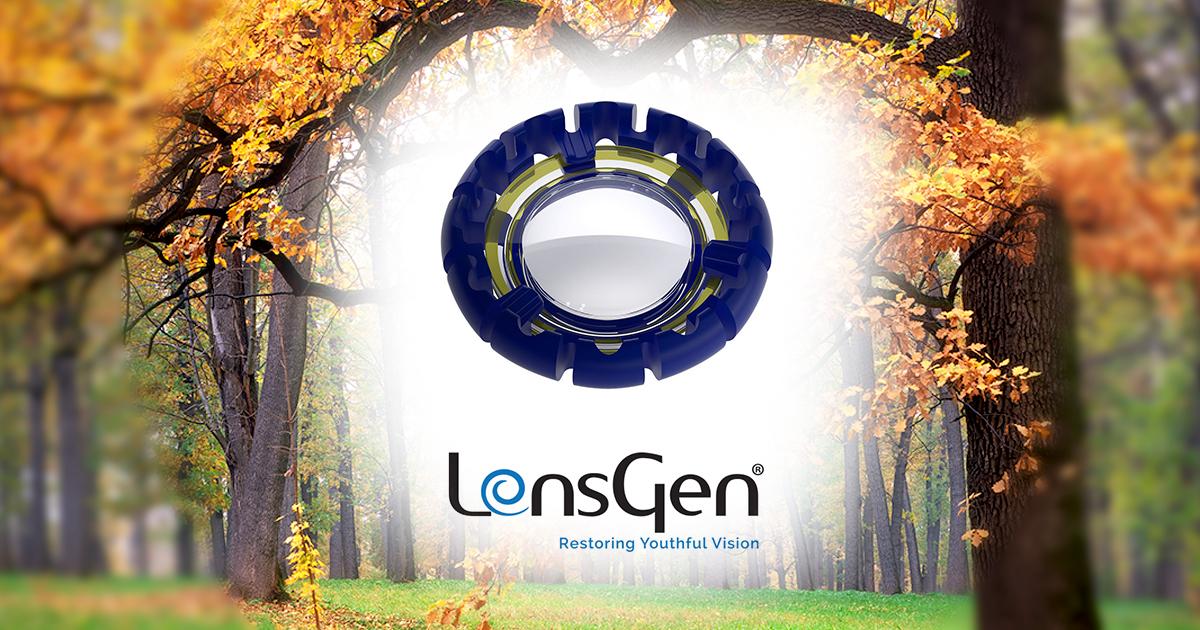Innovation Case Study: LensGen Focusing on a Complete Presbyopia Correcting IOL for Declining Vision

LensGen CEO Ramgopal Rao says the company has been built around a laser focus on customers’ needs and wants. That led LensGen to identify a market opportunity in presbyopia, leading to the development of the Juvene intraocular lens. The back story on how Juvene came about presents an enlightening case study of innovation.
Rao points out there are approximately 1.7 billion presbyopic individuals worldwide, and about 27 million cataract surgeries each year. So the LensGen team began by determining what would make up an ideal intraocular lens (IOL). They wanted to create an IOL that had the following attributes: excellent vision results, low complication profile, no compromises of the standard cataract, and a procedure similar to current cataract procedures.
How Juvene Happened
They decided that a modular IOL that is biomimetic in design, achieves full range of accommodation, and provides good quality of vision would meet patient and surgeon expectations. In addition, some of the compromises of standard cataract surgery such as posterior capsular opacification (PCO), instability of the IOL position in the capsular bag, and vitreous phase movement are minimized through a capsule-filling IOL design.
Sumit Garg, MD, of UCI Health Gavin Herbert Eye Institute in Los Angeles says an ideal IOL platform should give patients stable and predictable distance vision with concurrent presbyopia correction, excellent contrast sensitivity, superb optical quality, ability to correct astigmatism, and an enhanced safety profile. (Dr. Garg is on LensGen’s medical advisory board.)
Dr. Garg adds that none of the current IOL options – including extended depth-of-focus (EDOF), trifocal, and toric designs – provide everything patients want. “They want to be able to see distance, intermediate, and near, and have no halo and no glare,” he says. “They want everything, and as surgeons we’d like to give them that.”
A competitive review of current options shows no current IOL meets all these needs. LensGen saw an opportunity to improve on current technologies, and the result is the Juvene IOL.
The Juvene IOL is modular, having a base lens that includes an optic, and a fluid lens that has a curvature changing aspect to it, that gets implanted into the base lens. Three small tabs hold the fluid lens in place, and the lens is able to change shape to allow a dynamic range of vision. During the implantation procedure, the modular IOL is placed into the capsular bag, and because it holds its shape, it fills the bag and maintains the capsular volume.
Clinical Trial
The company has undertaken the GRAIL study, to assess the Juvene IOL. It includes 44 eyes at two sites in Mexico. The first implants, involving multiple surgeons, were done in January 2019. The study includes control and bilateral implants, and the patients will be followed out to 12 months.
According to Dr. Garg, the resulting defocus curves show that the Juvene lens has a better profile when it comes to distance, intermediate, and near vision compared with the most popular EDOF lens currently available in the US, and a better profile than a monofocal lens at all distances.
When this lens was implanted bilaterally, even better vision was obtained with improved range in vision. In three patients at one month, very favorable defocus curves showed the patients achieving excellent distance, near, and intermediate vision.
Predictability
Ophthalmologists want predictability when implanting an IOL. In a pilot study, over a one-year period, the lens stayed in place – the effective lens position didn’t change from where it was placed (as verified by stable refractions and UBM data). So long-term refractive shifts are not expected with this lens.
PCO is another compromise in standard cataract surgery. Because the Juvene lens fills the entire capsular bag, the capsule stays open, creating a very low PCO risk. No PCO has been reported in patients followed out to 52 months.
On a directed questionnaire, patients said they had none of the major side effects seen with some of the current presbyopia-correcting lenses, and Dr. Garg says patients had no complaints about the quality of vision they obtained with this lens.
LensGen continues to work on innovations that can be used in this platform. The platform is designed to be adaptive and upgradeable. Into the base lens could be placed a monofocal lens, or a fluid-filled lens to provide presbyopia correction as well as toric correction. Drugs and other devices as they’re developed can be added as well.
